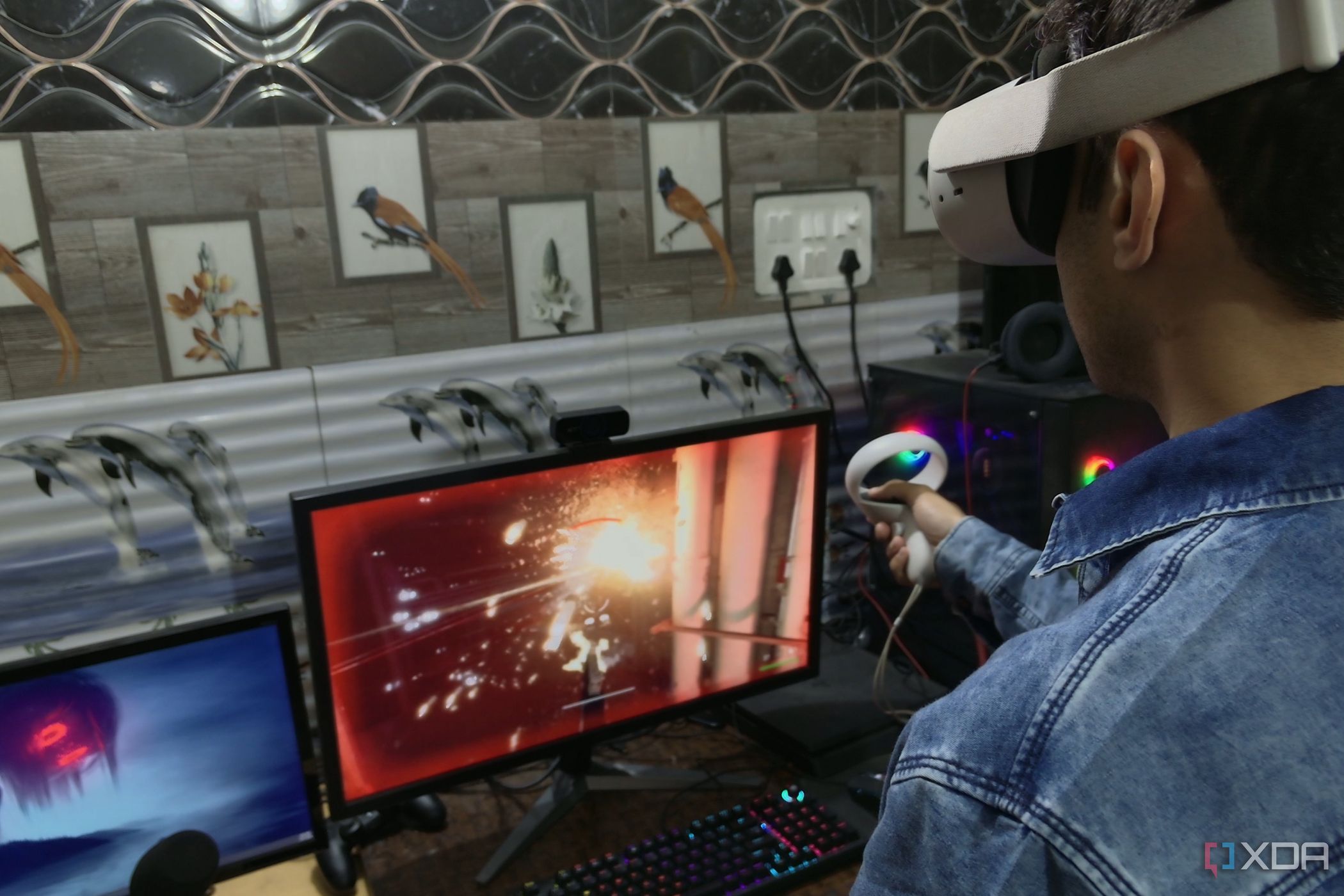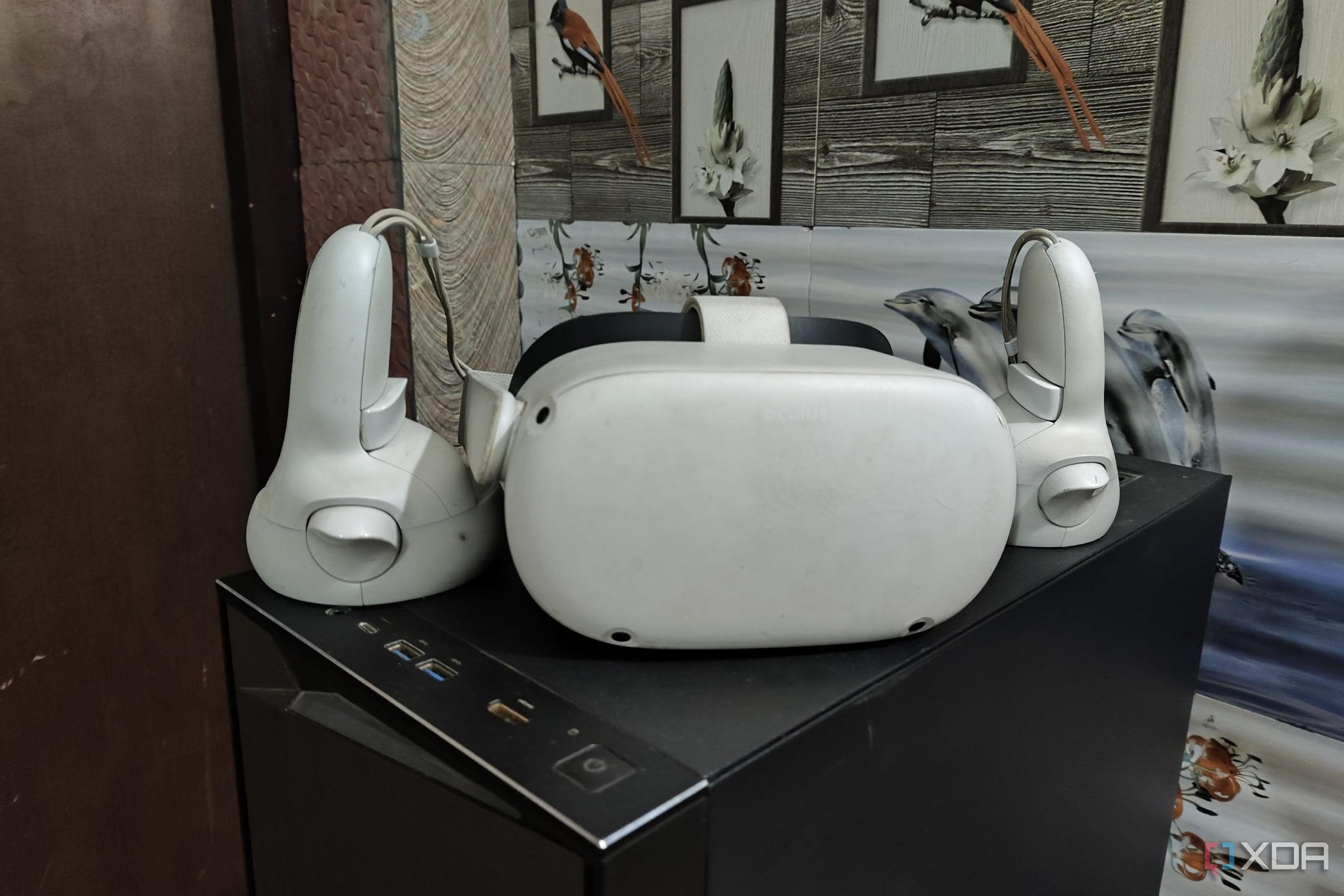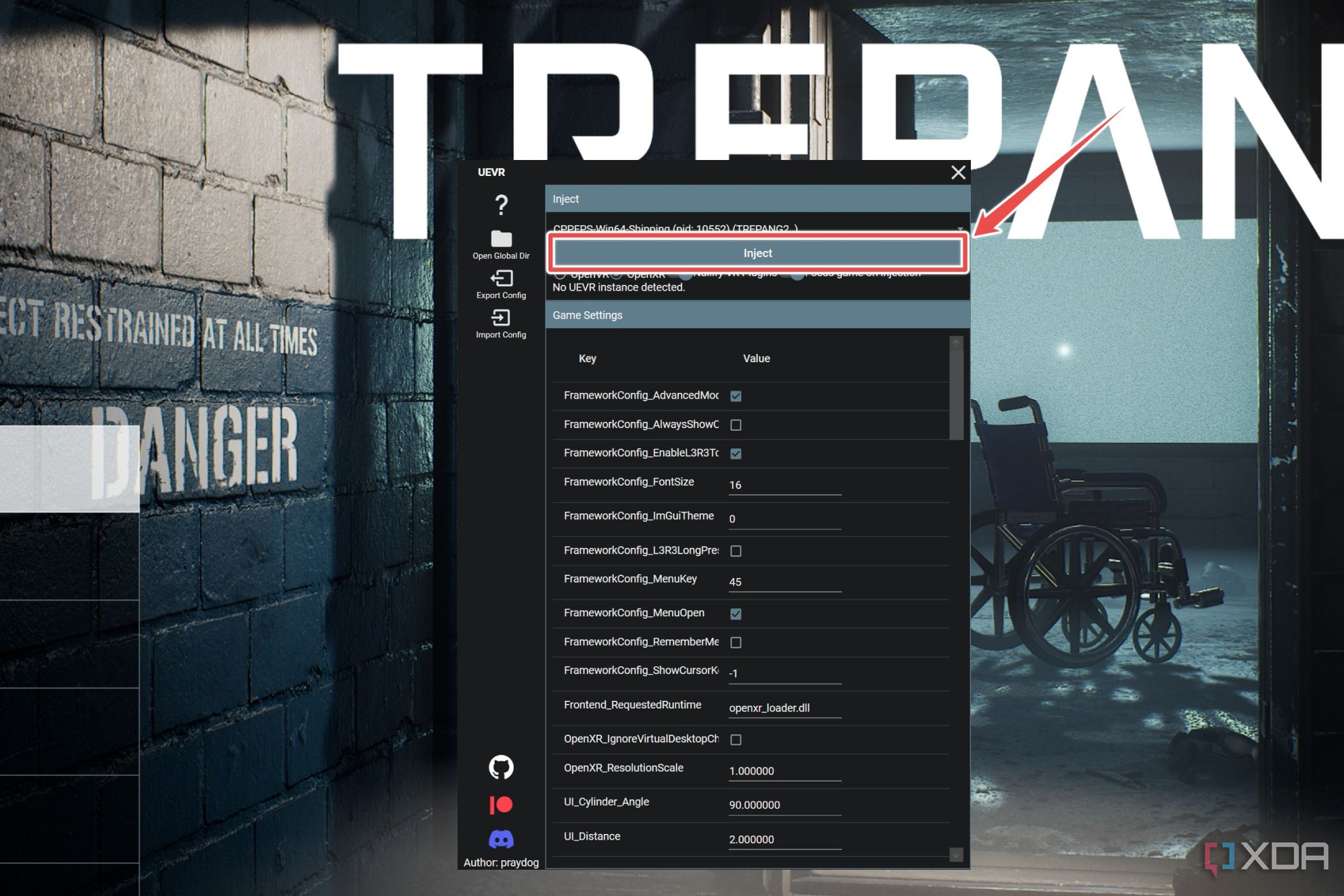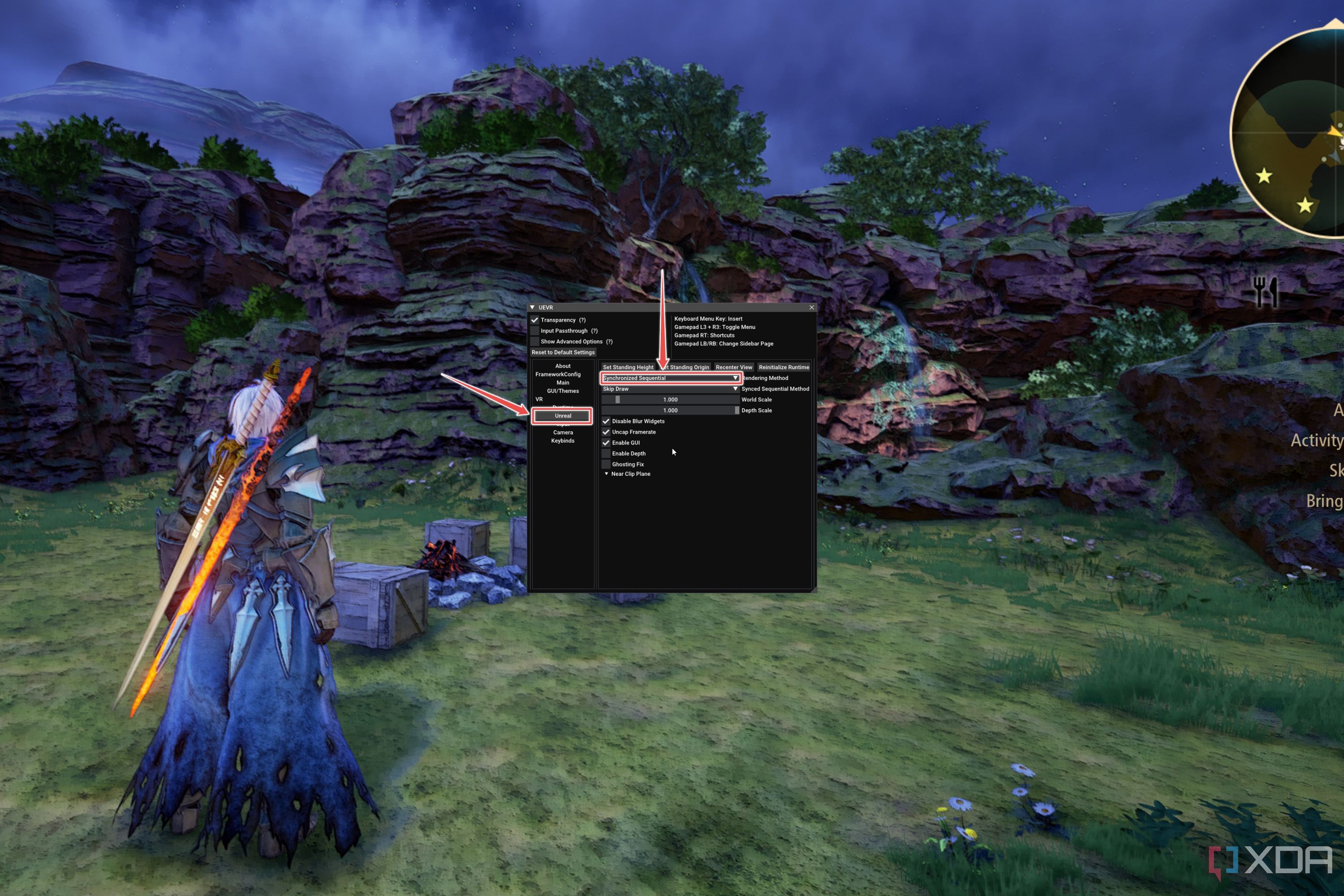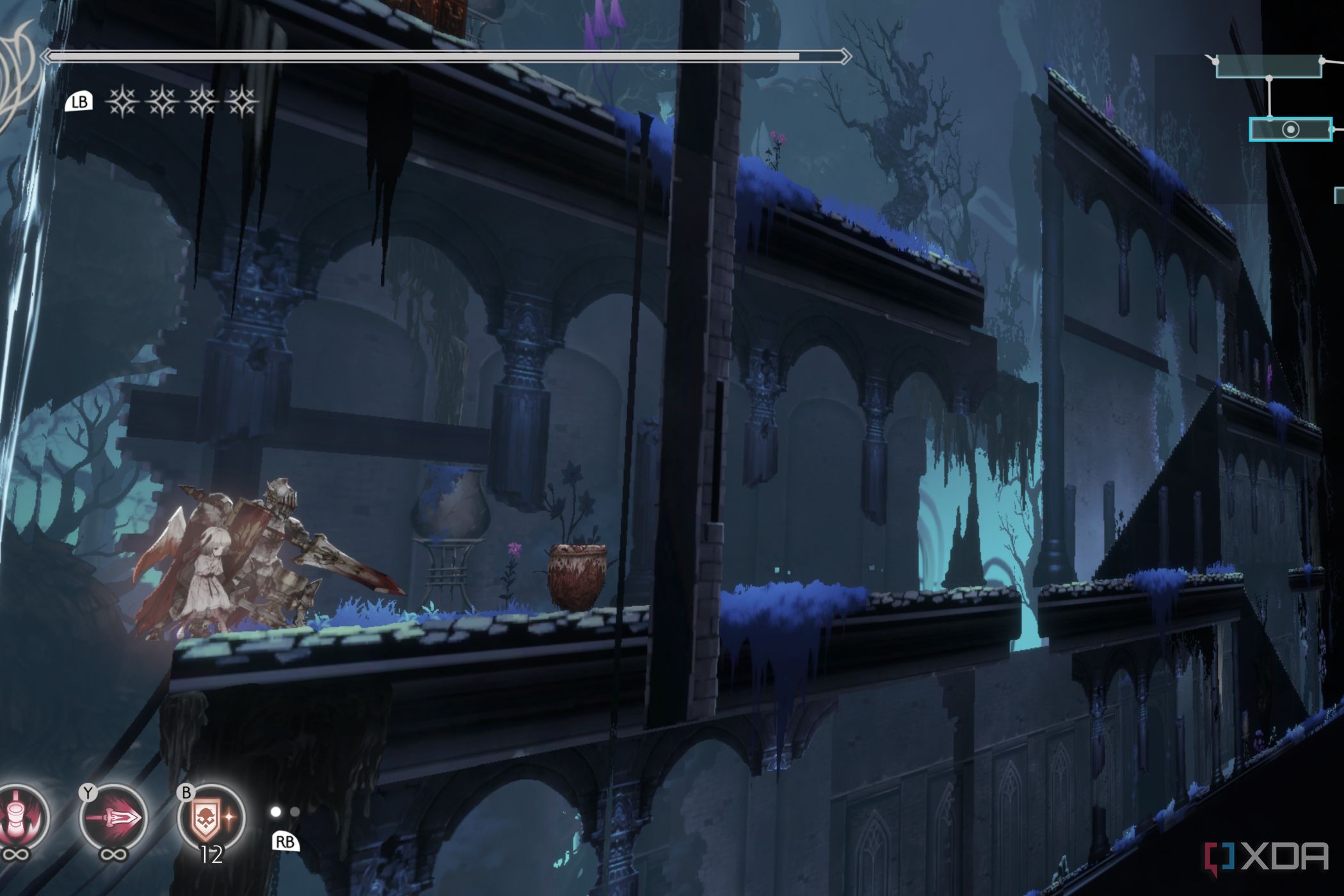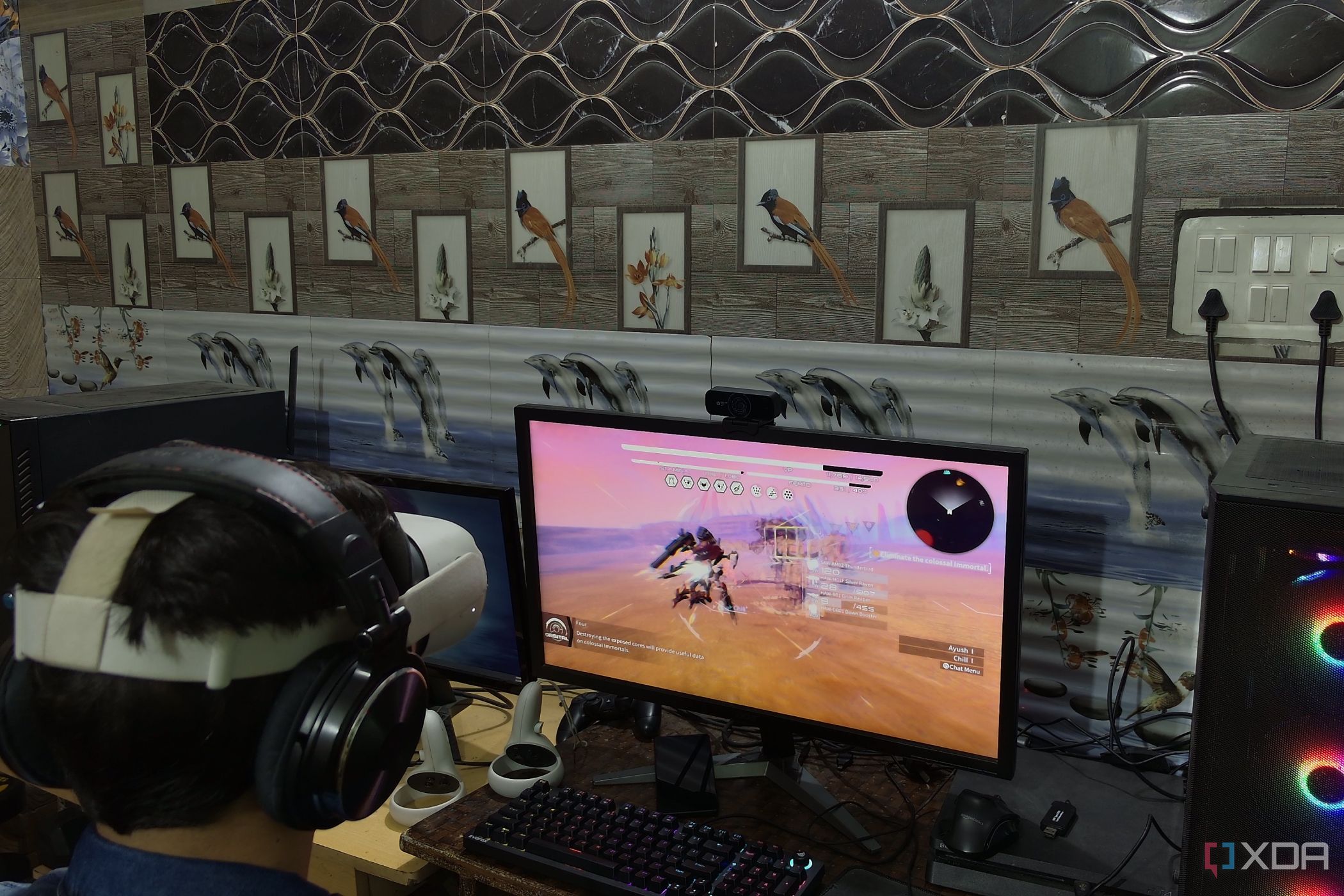Key Takeaways
- UEVR Injector makes VR gaming more accessible for Unreal Engine fans with a simple installation process.
- Most games run smoothly with the mod, offering a great experience with community-made controller profiles.
- You need a very high-end PC for optimal performance, and even an RTX 3080 Ti can fall short.
Believe it or not, virtual reality Head-Mounted Displays (HMDs) have been around for decades. However, it wasn’t until the mid-2010s that VR headsets finally started to grow in popularity. In the last couple of years, several strides have been made to make PC VR more accessible to the general audience.
The VR game library has also grown significantly thanks to a thriving modding community. But with the release of PrayDog’s Universal Unreal Engine VR Mod, it’s possible to experience several flatscreen Unreal Engine games inside VR. Having spent over two weeks playing some of my favorite Triple-A and indie Unreal Engine titles on my Meta Quest 2, here is my take on the UEVR Injector mod.

5 reasons why I’m all in on VR, and you should be too
Virtual reality may not have taken the world by storm, but there are still plenty of reasons why it’s worth diving into the VR rabbit hole
How to install UEVR Injector?
Installing the Universal Unreal Engine VR Mod is a straightforward procedure, though there’s one issue that you might encounter while setting it up. Like your typical injector mods, Windows Security and other Antivirus software tend to flag UEVR as a threat and can auto-quarantine it. So, you might want to temporarily set the Downloads folder as an exception in your Antivirus if it keeps deleting the UEVRInjector.exe file.
- Head to the official GitHub page and download the latest version of UEVR.zip.
- Extract the folder once it has finished downloading.
- Pair your VR headset to your PC and boot the Unreal Engine game you wish to test in VR.
- Minimize your game and run UEVRInjector.exe as an administrator.
- Click on the Inject button within the UEVR app, and wait for the game to appear in your headset.
What I like about UEVR Injector
Most games run after a few tweaks
As a hardcore nerd who’s into all sorts of video game genres, I was pleasantly surprised to see the UEVR Injector was compatible with a variety of indie and Triple-A games. I started things off with Crisis Core: Final Fantasy VII Reunion, which, apart from displaying the opening movie on a TV-like screen, worked without any issues for the most part. The same was true for Daemon X Machina. However, these games were the exception, rather than the norm.
Lighting and shader issues began cropping up when I tried to play Tales of Arise, Evil West, and Scarlet Nexus. This is because the games rendered different visuals for each eye, creating a weird overlap where the shaders and certain effects were broken. Although switching the rendering method from native to synchronized sequential solved the visual glitches, the games became a lot more taxing for my system (but more on that later).
Shooting games with pre-made profiles look incredible with the mod
Up until now, I had tested every game with my gamepad without switching to the Meta Quest 2 controllers. However, the UEVR injector has plenty of settings that not only let you change the key bindings but also allow you to enable controller tracking. If you don’t want to spend hours fine-tuning your VR experience, there are several community-made profiles that you can import for UEVR. Some of these profiles were so well-made that I almost felt as if I was playing official VR ports.
The first game where I imported these profiles was Trepang2, a first-person shooter that surpassed my expectations. Importing the config file was simple, and within minutes, I was able to dodge bullets in slow motion and cloak my way around the enemies in VR. Trust me, this is the definitive way to enjoy Trepang2!
After spending more than four hours with the game, I decided to try out Returnal. The default profile made the game playable with the Quest 2’s controllers, and aside from some performance issues, it was a blast to play the game in VR.
What I don’t like
You need a high-end PC for the best performance
One of the biggest caveats of VR gaming is the absolutely insane PC requirements, and the situation isn’t any different for UEVR. For reference, I tested all games on a Ryzen 5 5600X processor and an RTX 3080 Ti graphics card, and the performance wasn’t satisfactory. For highly optimized games like Trepang2, I didn’t have any trouble playing at 90FPS with reduced settings. Graphically-demanding games like Returnal and Ghostwire: Tokyo were a bit hard to run, as I had to turn down plenty of settings to play at high refresh rates.
However, for games like Evil West, the frame rates tanked when I enabled synchronized sequential rendering. The situation got so bad that I had to drop my Quest 2’s resolution under 1x on the PC companion application just to get playable FPS at low-medium settings.
Although my system is nowhere near the best gaming PCs out there, it can still run most modern games at high resolutions. The low performance was rather disappointing. In the end, I had the choice to either suffer shader issues at high performance or experience a low-resolution blur-fest.
Visual glitches and bugs are quite common
Unfortunately, not every Unreal Engine game I tried was compatible with the UEVR mod. Code Vein, for instance, crashed every time I tried to inject the mod into the game. Meanwhile, Final Fantasy VII Remake Intergrade displayed entirely different visuals for both eyes, making it impossible to proceed past the title screen.
Even the games that worked had some compatibility issues. In Scarlet Nexus, the game would crash if I used fast-travel or tried to resume it from the pause menu. While Ender Lilies: Quietus of the Knights looks really amazing in VR, there’s a camera glitch that allows me to see the entire level, including the secret items, just by panning my headset. That’s not something you could normally see in the game. Likewise, Bravely Default II has a bug where the UI landmark icons are bugged, and the floor disappears every time a cutscene plays.
UEVR Injector: A game-changing mod for VR lovers
Assuming you have the hardware to run it
All-in-all, I was pleasantly impressed by the UEVR Injector. Sure, the mod has plenty of quirks, including visual bugs and performance issues on even the most cutting-edge graphics cards. There are also sudden shifts in the camera perspective when you encounter a pre-rendered cutscene, which can be quite jarring at times.
All that said, the fact that the mod can easily run most Unreal Engine 4 and 5 games is nothing short of amazing. If you’re into VR and own a decent gaming rig, there’s no reason not to give UEVR Injector a shot.
1:38
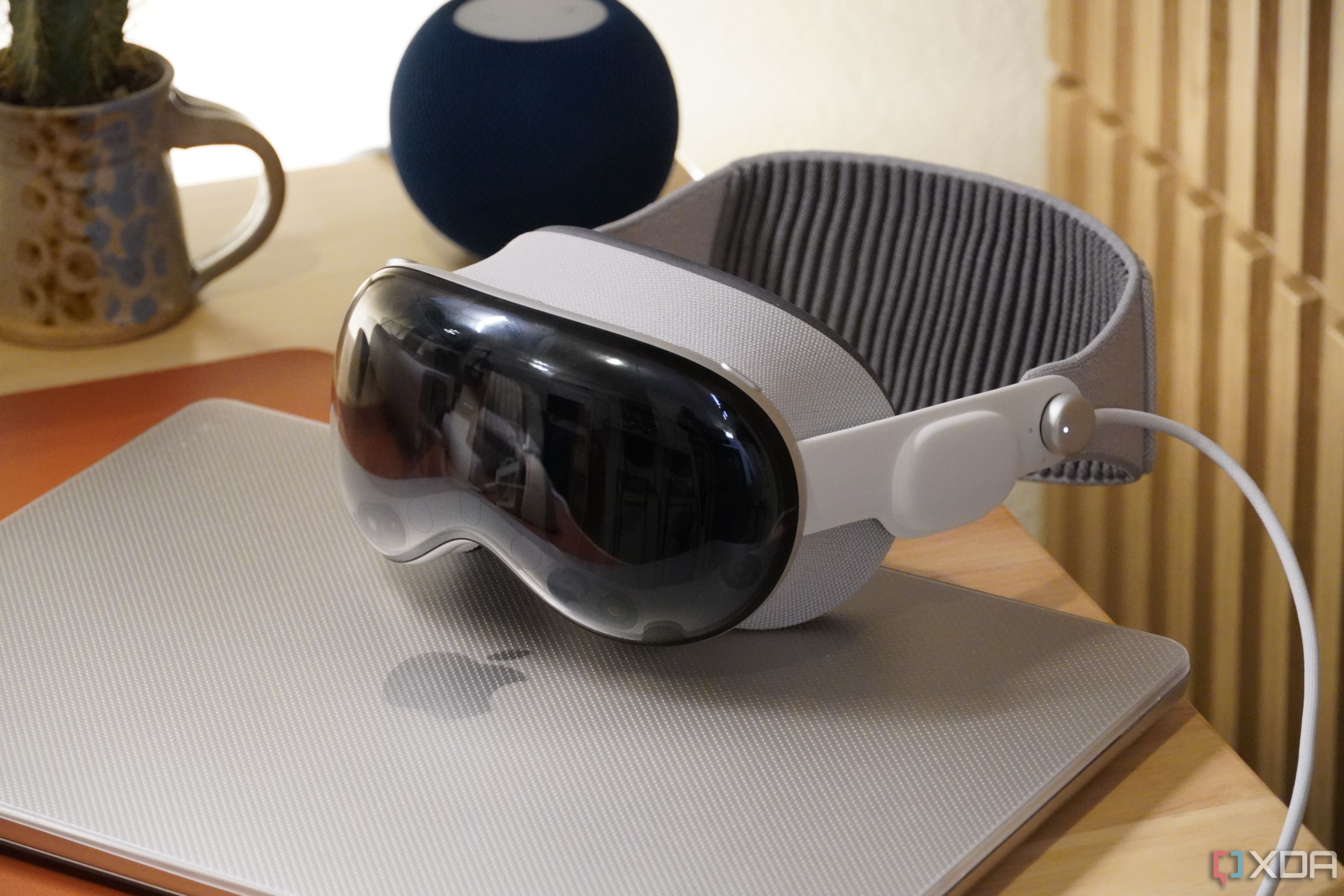
Apple Vision Pro review: It’s a half-baked glimpse of the future
Spatial computing might be the future, but Apple Vision Pro is more of a proof-of-concept in its current state than a product people should buy.

Maria Malik is your guide to the immersive world of Virtual Reality (VR). With a passion for VR technology, she explores the latest VR headsets, applications, and experiences, providing readers with in-depth reviews, industry insights, and a glimpse into the future of virtual experiences.

